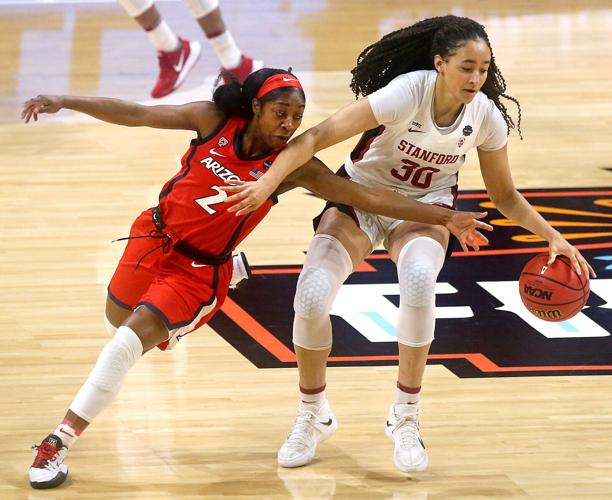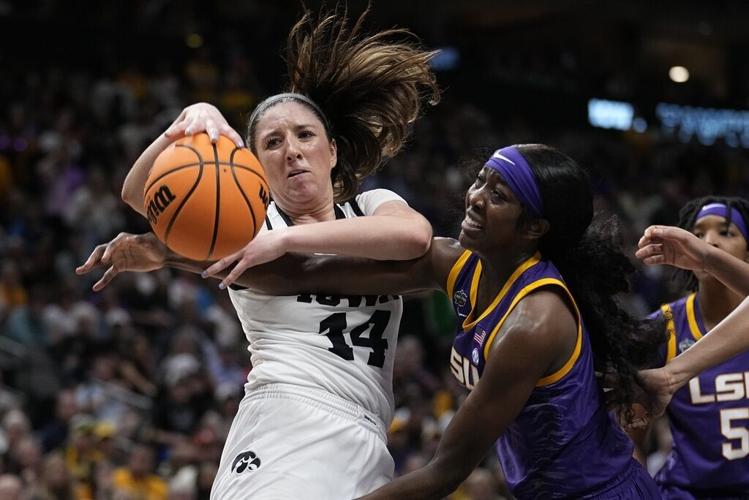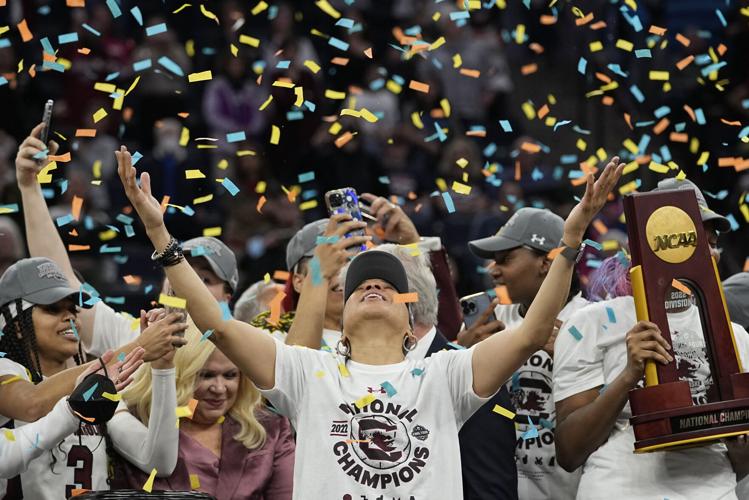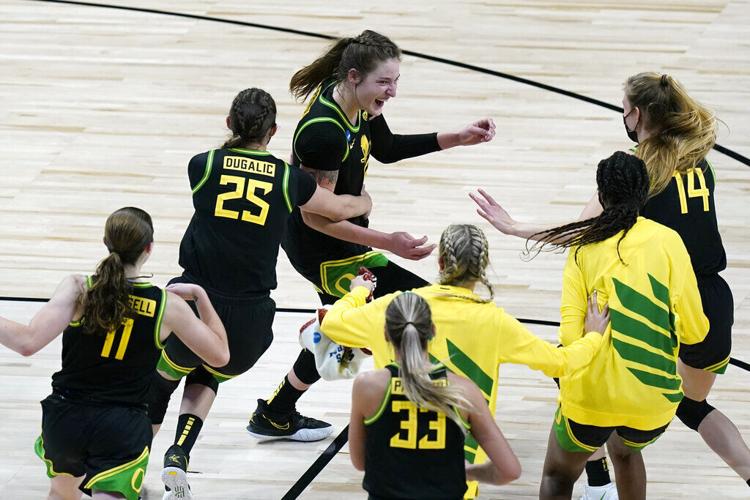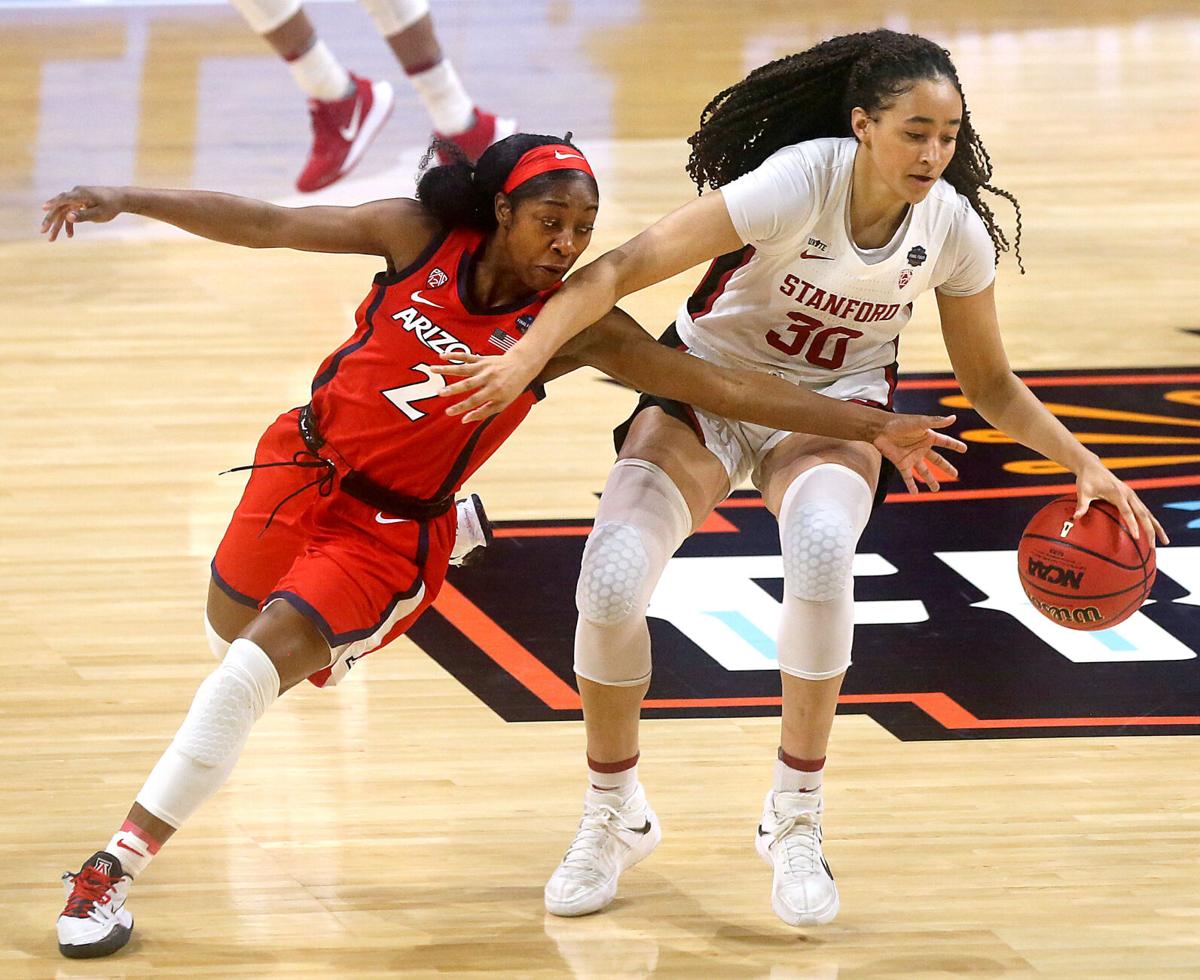We all knew it was coming.
Once Colorado split with the Pac-12 two weeks ago, we could all anticipate what was next. Heck, when USC and UCLA announced their departure for the Big 10 last July, all of this was imminent — especially when league commissioner George Kliavkoff let the Big 12 sneak in line to secure a media rights deal.
But expecting it and having that band aid ripped off are two completely different things.
Now that I’ve let the Pac-12 breakup sink in and the sadness has subsided — yes, saying goodbye to the conference that has brought us so many great moments and athletes (Aari McDonald, Sam Thomas and company putting the Wildcats back on the map in women’s basketball; Stanford great Chiney Ogwumike taking extra shots after playing 40 minutes in a matchup at Maples Pavilion; Washington’s Kelsey Plum and Oregon’s Sabrina Ionescu setting records; speedy UCLA freshman Charisma Osborne dominating a UA team in Pauley Pavilion) — dare I say it, seemed like grieving.
I expect down the road, come the end of the women’s basketball season, once again there will be small bouts of sadness.

is a sports reporter for the
Arizona Daily Star,
Tucson.comand
The Wildcaster.But for now, it’s easy to see how we got here.
From Pac-12 commissioners Larry Scott and George Kliavkoff making colossal mistakes regarding the Pac-12 Networks — not getting it on every TV package in the United States and not partnering with a Fox or ESPN — like the SEC Network or Big 10 Network.
Let’s not forget the puppeteers behind the scenes orchestrating every single move in this so-called conference realignment: Fox and ESPN.
Was raiding the conference and then letting the Big 12 move ahead of the Pac to sign a deal, just a coincidence? Or is this payback for not signing on to partner with Fox/ESPN a few years ago?
Most likely we will never know the answer to that one.
What we do know is that Fox is ponying up the extra $30-35 million for Washington’s and Oregon’s new revenue from the Big 10 media right deal starting in the 2024 season, according to Ohio State athletic director Gene Smith. This extra share is not coming from the revenue that each of the fully-vested Big 10 teams are receiving.
However, there is another piece to this puzzle that could have brought millions to the schools in the Pac-12: negotiating a separate media rights deal for women’s basketball.
Now, to be fair, Kliavkoff said repeatedly he was going to bring a deal for women’s basketball to the table when he shared the media rights options with the school presidents. From what we’ve heard about the deal so far this was not included. As my dad used to say, ‘Talk is cheap.’
Pound for pound, Pac-12 is the best women’s basketball conference in the nation and it has been this way for quite a few years. Every opponent is tough, even those at the bottom of the standings aren’t gimme wins in this league.
Arizona has been in the Top 10 for attendance the last two seasons and is a big draw for nationally televised games. This is evidenced by ESPN showing the Wildcats in two of the three Pac-12 games televised last season.
During the run to the run to the 2021 national title game, fans across the nation fell in love with the Wildcats and their coach, Adia Barnes. They were the underdogs who were left off the publicity for the Final Four — the upstart team that wasn’t supposed to be there.

Oregon forward Sedona Prince, center, celebrates with teammates after a college basketball game against Oregon in the second round of the women's NCAA tournament at the Alamodome in San Antonio, Wednesday, March 24, 2021. Oregon won 57-50. (AP Photo/Eric Gay)
That year, Arizona played Stanford in the NCAA national championship game, and the NCAA was exposed for the inequities between the men’s and women’s tournaments when an online post from then-Oregon standout Sedona Prince went viral. She showed side-by-side photos of the workout facilities for the men (a huge room full of equipment) and the women (a small rack of weights and resistance bands in the corner of a hotel conference room).
This isn’t the only thing that hasn’t added up. One of the biggest glaring differences between the NCAA Tournaments: the men’s programs get paid, the women’s programs do not.
The men earn units that are paid to the conference and distributed. For example, last spring the Pac-12 earned seven units for four teams that participated equaling $14 million. Meanwhile, on the women’s basketball side of things, seven schools participated in the NCAA Tournament and two played in the Sweet Sixteen. Most likely the league would have earned even more units for this, if women’s basketball was paid for participating.
Arizona’s women’s basketball team has earned no money for participating in the last three NCAA Tournaments and playing in the national title game in 2021. Stanford has earned no money for winning that title and playing in the Final Four 15 times.

South Carolina head coach Dawn Staley celebrates after beating UConn, 64-49, to win the 2022 NCAA Tournament championship game in Minneapolis, Minnesota.
After being exposed for not treating the tournaments the same way, the NCAA commissioned an independent report to determine how to close the gap.
Paying women’s basketball teams and the conferences for their postseason successes most likely is tied to the media rights deal.
Currently, for the NCAA championships, everything but football and men’s basketball, is thrown into one bucket for ESPN. That’s not unlike most of the deals with conferences.
The NCAA will start negotiating on a new deal later this year and there has been a call from top coaches, like South Carolina’s Dawn Staley, for women’s basketball to have their own package and also for those units.
The current deal — that includes nearly two dozen sports except football and men’s basketball — pays the NCAA $34 million.
Pulling women’s basketball out of this package is one of the suggestions that came out of the independent report. Media expert Ed Desser estimated the annual broadcast rights for women’s basketball would be worth between $81 million and $112 million in 2025.
This is just for the NCAA Tournament. Imagine what a women’s basketball package would look like for a conference, or even the best women’s basketball league in the nation.
To those who say that no one watches women’s basketball, the numbers tell a different story.
Viewership for women’s hoops has also grown exponentially over the last few years.
For that 2021 final that pitted the two Pac-12 teams in Arizona and Stanford in the championship, an average of 4 million viewers (peaking at 5.9 million) was the most since the 2014 title game.
The very next year, when Staley’s South Carolina team beat UConn for the national title, 4.85 million viewers tuned in; that became the most-watched college basketball game on ESPN — men or women — since 2008.
This past spring, 9.9 million viewers watched LSU beat Iowa (peaking at 12.6 million) in the the title game aired live on ABC.
To put this in a little context: the 2021 NBA finals on ABC averaged 9.89 million viewers.

Iowa's McKenna Warnock and LSU's Flau'jae Johnson go after a loose ball during the first half of the 2023 NCAA Division I Women's Basketball championship in April. Broadcast on ABC, 9.9 million viewers tuned in to see LSU win it all.
Access is the name of the game. With the title game being on ABC, a channel most Americans can watch, viewers tuned in and kept watching.
We all know that all this conference movement is about football. And for Arizona, a move to the Big 12 overall will be a good thing. The Wildcats profile will rise and yes, the UA will make more money.
But all of that at the expense of destroying a conference that has a 100-year history, tradition and incredible athletes doing incredible things on the field of play is inexcusable.
There were ways to avoid this but no one had the foresight.
Some have suggested that all football teams could break off forming NFL-like divisions and all the other sports forming regional conferences. This sounds like a good step.
Kliavkoff tried to go mainly streaming (Apple TV+) as that is the future. Again, to be fair, it is. However, don’t most fans want to watch games — especially football — on linear or traditional TV?
It’s easy to see why. Have you ever tried to check out what is happening on another game when you are streaming a game?
You have to switch out of that streaming service, move over to your regular TV package or another streaming service. That could take up to a minute or longer. By that time, you’ve missed a big play and switching back is another hassle.
On regular TV on a Saturday, you can sit and watch football all day long — quickly flip between games — and not miss much of the action. Until technology catches up to the viewer’s habits (or if the technology is there but hasn’t been distributed yet) fans want everything to stay the same.
While all of this might be the right direction to head for the long term, school presidents, league commissioners, NCAA leadership and TV executives are missing what’s right in front of them.
By leaving all this money on the table, they’ve kept women in the backseat and it will take years, if ever, to catch up. They’ve also hurt themselves as we wouldn’t be where we are right now.
All it would have taken was one man in leadership to stand up and do the right thing: invest in women’s basketball.
The White House hosted the NCAA championship men's and women's basketball teams at separate events on Friday. President Joe Biden was joined by his wife, Jill, for the celebration for Louisiana State's women's team.


